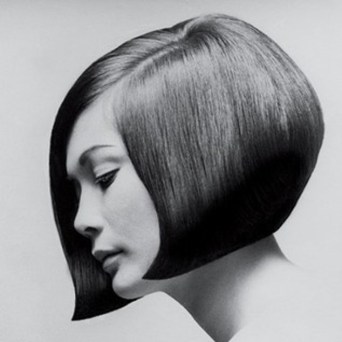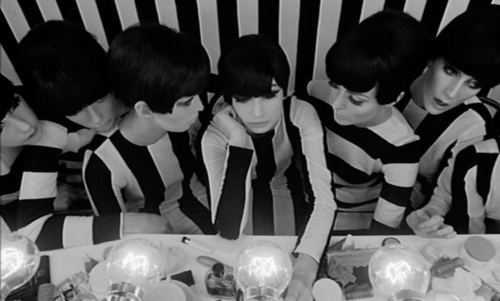earlier, when was at work, i was listening to some tape i gathered earlier this week of some sound art installations. “what is that sound?!” i ask myself as i hear a high pitched squeaking.
my colleague listens back and guesses, “was there a mouse around?”
“no,” i insist. “there weren’t any mice around. it’s a sound art installation! that’s not part of it… it distracts your ear too much though.”
my colleague agrees, “yeah, you can’t use that.”
i know it’s not useable. but if only that squeaking weren’t there it would be great! disappointed, i think back… was i holding my microphone correctly? which one was i using? where was i aiming? what was that squeak?!
then, it hits me.
my shoes.
my awesome black and white dapper shoes i bought in mexico city two years ago.
they are the stylish source of the squeak.
 i’m practically kicking myself listening back to my tape. yes, those shoes looked good. yes, when i got dressed that morning i chose flats instead of heels, because i wouldn’t make too much noise walking around the gallery space. but i forgot that these shoes squeak, and didn’t even begin to think they’d ruin my sound.
i’m practically kicking myself listening back to my tape. yes, those shoes looked good. yes, when i got dressed that morning i chose flats instead of heels, because i wouldn’t make too much noise walking around the gallery space. but i forgot that these shoes squeak, and didn’t even begin to think they’d ruin my sound.
it’s alright, though. i found sound from later on where they don’t interfere too much… but it was still a bit more work than it needed to be, simply because what i was wearing interfered with my job (which is often gathering sound and information).
this brings me to my next point: since i started working in radio more frequently, there have been a few very clear changes in what i wear. there are the more explicitly practical changes that have happened; i’m a big jewelry wearer, and i own more pairs of earrings than i can count. i feel like a beautiful locket or necklace can really make a boring outfit really bold, and i love when people ask me about them and i get to share the stories behind them.
when working in my daily life though, i’m often wearing headphones. listening back to tape, cutting it, recording. when i’m not, i’m often on the phone, making calls, trying to find stories or guests.
slowly but surely, earrings have migrated their way out of my daily wardrobe. i tried with all different pairs, studs, dangly ones, light-weight… but every time they interfered and made their way from my earlobes to my desk drawer. now, they feel like a “special occasion” type accessory… which is part of why i wore them everyday! to conquer that silly “daytime/evening” outfit crap! bummer.
necklaces? again, much like the squeaky shoes, they can make too much noise. bangles are out of the question.
 funky pins on chunky old man cardigans? hrm. not sure. will people be more distracted by what i’m wearing, than what i’m asking?
funky pins on chunky old man cardigans? hrm. not sure. will people be more distracted by what i’m wearing, than what i’m asking?
this brings me to my next point. it’s not so much just accessories that either prevent me from doing my job comfortably, or effectively… it’s also how my clothing choices have evolved. depending on what story i’m covering, i’m increasingly conscious of how i want to – or should – present myself.
 press conference at city hall? let’s go for the tied and true black and white. yeah, sure it’s a white dress shirt i’ve worn since 7th grade with stains from high school art classrooms, but i look professional in it. part of this is obviously that i’m still kind of a rookie, and that i’m a young woman who wants to be taken seriously. a fun pair of tights can be my way of putting a little spin on what i would otherwise see as a boring conventional outfit.
press conference at city hall? let’s go for the tied and true black and white. yeah, sure it’s a white dress shirt i’ve worn since 7th grade with stains from high school art classrooms, but i look professional in it. part of this is obviously that i’m still kind of a rookie, and that i’m a young woman who wants to be taken seriously. a fun pair of tights can be my way of putting a little spin on what i would otherwise see as a boring conventional outfit.
reporting on the occupy quebec protest in november? get your slick looking coat out of the closet, some practical gloves, warm clothes. don’t forget, you don’t want to be mistaken for one of the prostestors, you slightly reformed hippie activist! but OH SHIT. but you get assigned randomly very early one morning, because there’s a big change all of the sudden and you need to go RIGHT NOW? forget one glove, wear your ridiculously over the top fur trimmed coat, look kind of ridiculous. get photographed and be in the background of all the newscasts. feel awkward.
 overall, it’s nothing to lose sleep over. but i’d be lying if i said it’s not something i think about before i get dressed in the morning to go to work. everyone does it to some extent, but i’m more interested in tackling the shift of someone who plays with fashion and how it relates to their (gender, sexual, class or political) identity, and how they feel they should dress depending on their line of work.
overall, it’s nothing to lose sleep over. but i’d be lying if i said it’s not something i think about before i get dressed in the morning to go to work. everyone does it to some extent, but i’m more interested in tackling the shift of someone who plays with fashion and how it relates to their (gender, sexual, class or political) identity, and how they feel they should dress depending on their line of work.

four panels from jenna b.'s interview clothes strip. click the image for the rest.
some of these are ideas that j. bee and i touched on earlier this summer, when talking about why we looked “good,” and the frustrations of dressing for job interviews. dressing “professionally” for the first time can sometimes feel like you’re trying to fool people. if you’ve had a punk phase, or followed any sort of subversive community’s fashion decree, you might feel like you’re selling out to “the man” by dressing like the “suits.” i think i felt that a bit more when i had my very first “professional” job, but there is definitely a balance to be had of still feeling like you’re dressing in a way that is “you” all while still being taken seriously. sometimes, that means keeping my neon 1960s mod dresses, sexy lace shirts, sequined skirts, and funky tights at the back of the closet (or just until friday night).
of course, i’m not the only one who has wondered about these weighty questions. i shared this article on tumblr a while back, but it definitely deserves reposting here. Q & A with dean spade on Queer Couture is mainly a discussion about the ten years since spade’s influential essay “Dressed to Kill, Fight to Win” for an ANTI-FASHION SHOW zine in 2002. what really struck me about spade’s reflections was how his work life affected how he presented himself, and his own struggles with that. it’s something i’ve been increasingly conscious of in the past two years, as i made the shift from student, to unemployed, to working in a somewhat more conventional “career” driven environment. here’s some of what spade had to say:
A big influence on my day-to-day fashion experiences is my job as a law professor. When I worked at SRLP, I had to go to court and deal with government agencies and officials, and I wore a suit for those things, but my working space at SRLP was an office full of trans and gender non-conforming people. Even though we all looked different from each other, I still felt affirmed while in the office, like I was among people sharing an oppositional approach to many appearance norms and thinking politically about how we look. It was a big shift to start working in such a straight, upper-class, gender normative environment. It’s a drag to manage my perceptions of other people’s perceptions of me. It’s exhausting. I think that is why reading the tone of this old essay feels good—its affirming and relieving.
Because I spend so much time now in a very professional, gender normative work environment, I have to remind myself that I love weird people, I am weird, I want to be weird, and being normal is truly horrifying. I’m thinking of that experience of seeing someone on the street or on the bus who is working some kind of weird, non-normative look and feeling some delight and relief, like the person’s existence is making space for you. I have often felt that way when I see other visibly queer or visibly trans people, or other kinds of rule-breakers. It’s beautiful to see people taking those risks and its wonderful to have those moments of mutual recognition with a stranger in the midst of a hostile world. I think I appreciate those moments now more than ever, as I wander the hallways confronted with the gray business suits of professors and the university sweatshirts and Uggs of students. Sometimes I’m just blown away when I look around a classroom of 80 students and almost all the women have long hair and almost all the men have short hair. The level of norm abiding and of standardization should shock us. It suggests the significance of the processes people go through to decide to make major departures from those norms.
my relationship to fashion in the workplace is quite different from spade’s for a variety of reasons, but i can relate to the crux of the argument. once a wierdo, always a wierdo. and if fashion was the one way you feel like you can express that wierdness, it can feel wrong to have it taken away from you… even if you’re the person taking it away, to some extent. for the most part, i’m still able to dress however i choose, and have felt lucky enough to have not had any rude comments made about some of my funkier outfits. i’m also thinking back to the first time i had to wear work uniforms in my early, crappier jobs, and how it encouraged me to be more adventurous every hour i didn’t have to spend behind the counter. quit your rambling, julia! you know i could go on and on about this…
i’m curious to know of your own thoughts and feelings about this, and how this varies from field to field. i’m sure the opposite happens, as well – where more straight-laced folks might feel pressure to dress funkier, say, if you work in an organic health foods store but like to wear a suit and tie. what have your experiences been with your sartorial choices and your field of work?
let me know what you think, and thanks for reading.
RECOMMENDED READING:























